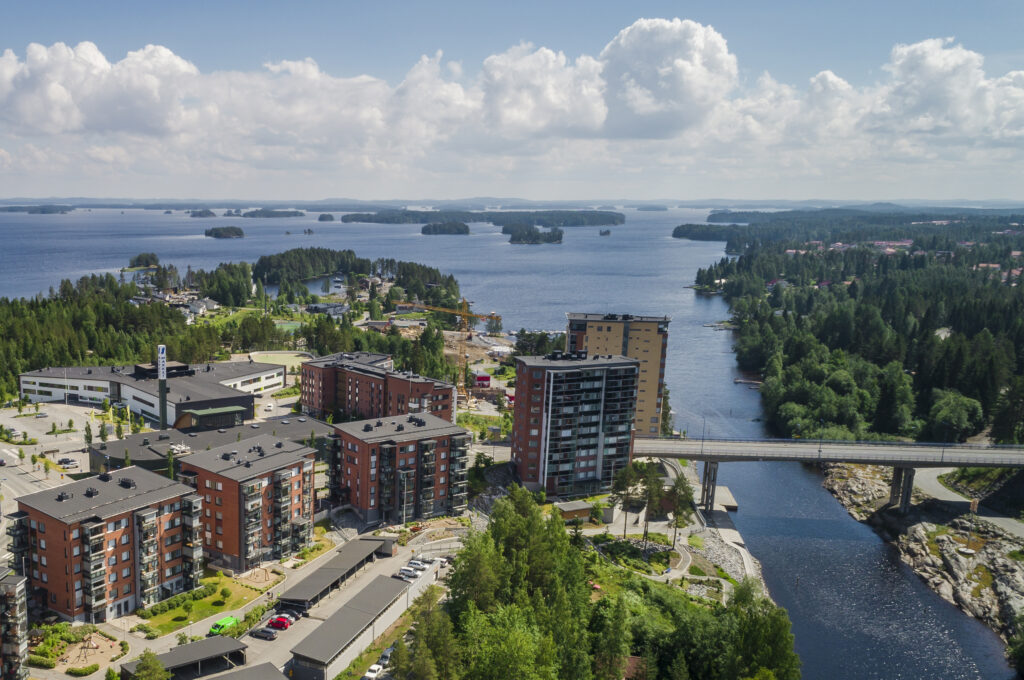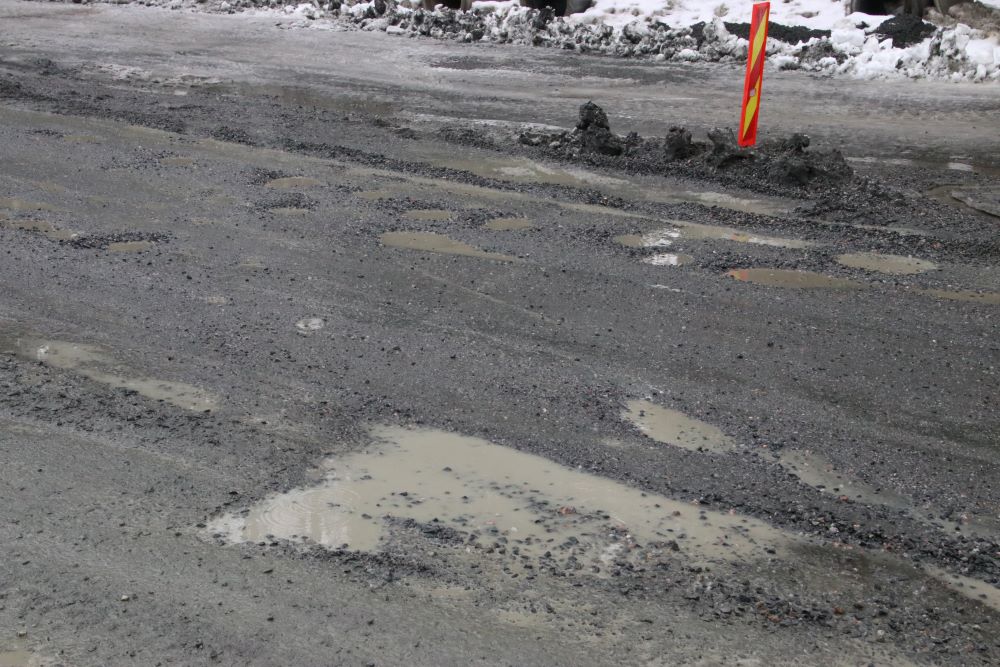"A country that is built well does well" - as long as the conditions are right. The policy pursued in the next four-year parliamentary election period 2023-2027 is of no importance to construction industry companies, personnel and related parties. Therefore, the decision-makers who will be elected on April 2 have big expectations from the building and infrastructure sector. In Eastern Finland, they are also associated with significant regional advantages.

Photo: RT's image bank / photo agency Figure
Rakennusteollisuus ry has drawn up three main national election themes and its own promises, the motto of which is "A country that is built well, does well". The slogan is based on the fact that building and infrastructure construction is one of Finland's most important industries due to the national economy, employment, tax revenues, the basic need for housing and other social effects. On the other hand, construction is strongly influenced by economic development, financial markets and legislation. Political decision-makers have great influence on these matters.
The construction industry's three promises for a sustainably growing, safe Finland are:
- Building reasonably priced housing, 35 new apartments every year and doubling renovation construction - as long as society does not put obstacles in the way of legislation and financial markets, for example.
- A safer, more accessible and more competitive Finland - as long as the road funding is in order and the transport network is developed in the long term.
- A more sustainable tomorrow by building a more functional and energy-wise living environment, reducing emissions, and promoting a circular economy - as long as society increases product development investments and low-carbon energy production and dismantles barriers to the circular economy.
Those who support these main themes and give even more information to the decision-makers from Eastern Finland's point of view are the District Manager of the Eastern Finland District of the Building Industry Kimmo Anttonen, the chairman of its board, a construction entrepreneur Pasi Pitkänen, executive director of Infra ry Pohjois-Savo Pekka Lyytikäinen and the chairman of the board, a land transfer entrepreneur Kari Vikelä.
Work on dismantling norms, fixing the financial market and reducing repair debts
Pasi Pitkänen is calling for more work on dismantling the norms already started by the government in the next election period, i.e. easing the zoning, permitting and construction legislation that shackles construction too much. The new construction act will move in that direction from the beginning of 2025, but a lot also depends on the detailed regulations and application interpretations in the municipalities and provinces.
- It is important for the whole of Finland to move to a more sustainable economy, i.e. curb indebtedness and inflation, ensure the functioning of the financial market and the purchasing power of the citizens. They are key prerequisites for adequate new and renovation construction.
- More funding for basic repairs must also be obtained with the support of the state and the European Union, in order to pay off the growing repair debt and renew the building stock to be more energy efficient and environmentally sustainable. There would be a need for 15 billion euros annually. The pressure is still growing, when the EU is getting stricter requirements for energy renovations even for the current building stock.
In Pitkänen's opinion, the government's ten percent repair subsidy for housing associations, which proved to be good during the previous economic recession in 2008, should be reintroduced. It would also have an impact on employment.
- The construction industry has to better prepare itself for combating climate change, for example by increasing recycling and increasing low-carbon in building materials and in the construction itself. I hope for background support for these efforts from the state.
Eastern Finland's vitality must be safeguarded
Kimmo Anttonen agrees with Pitkänen's views, emphasizing also the support of Eastern Finland's vitality and equal competitiveness with the government's funding policies, both for road works and economic policy. According to him, it is necessary to take care of the attractiveness of the largest urban areas, for example, with an active plot and zoning policy.
- Eastern Finland's vitality is important for the safety and security of supply of the entire country. The value base of the welfare state, which is on the side of the small and the poor, must also be made to work in regional politics. Eastern Finland's challenges appear to be long-term, and regional politics cannot allow the politics of the strong and rich at the expense of the struggling regions of Eastern Finland, emphasizes Anttonen.
Money for the maintenance and improvement of traffic routes
Pekka Lyytikäinen hopes that more of the most important transport corridor projects listed by the Finnish Transport Agency would be located in Eastern Finland. Now, almost 80 percent of their euro value falls on Southern and Western Finland. The largest number of passengers travel there, but in terms of material transport of industrial raw materials and processed products, Eastern Finland is a more significant region in terms of population.
- In addition to basic road maintenance, the most important funding targets for road transport are the improvement of highway 5, especially between Kuopio-Leppävirta, improvements of highway 9 between Joensuu-Jyväskylä and maintenance of the lower level road network, not forgetting gravel roads. For example, the drainage and asphalting of the roads have recovered, which can be seen in the deterioration of the condition of the roads as the rainfall increases. Asphalting has fallen to around 1500 kilometers in Finland, i.e. less than half of the actual need of 4000 kilometers. Here too, Eastern Finland has fallen behind the "mope". It must be remembered that 90 percent of passenger traffic and almost 70 percent of freight traffic are on rubber wheels.

The roads of Eastern Finland have reached an increasingly poor condition due to the scarcity of maintenance funds. Photo: Ilpo Lommi
- The railway network needs to be developed on the Savo and Karjala lines in terms of the ability to mediate safety, for example by increasing passing places and basic improvements. In air traffic, it is important to keep Kuopio and Joensuu in the airport network with sufficient traffic. Waterways should not be forgotten, especially when the use of the Saimaa canal is frozen for an unknown period of time. Therefore, the construction of the Kymijoki and Päijänne canals should be taken into consideration in the long term in order to expand the waterway network from the sea to the inland. Now it has been necessary to transfer material transport to railways and roads, which is not an environmentally favorable development.
Saving mowers away from the road network
Kari Vikelä is on the same lines as Lyytikäinen. As a supplier of soil materials for infrastructure and building construction sites, he recognizes the deteriorated condition of both the higher and lower grade road network.
- Improving the road network and maintaining it at a minimum is essential for the functioning of Eastern Finland's business life and public administration, as well as for the movement of private citizens. It should not be touched by austerity cutters in the beginning of the election season. Finland is far behind Sweden in transport network investments. In addition, within our country there is inequality in the maintenance of the road network, for example in the comparison between highway 5 and 4 to the detriment of the former, emphasizes Kari Vikelä.
Text: Ilpo Lommi